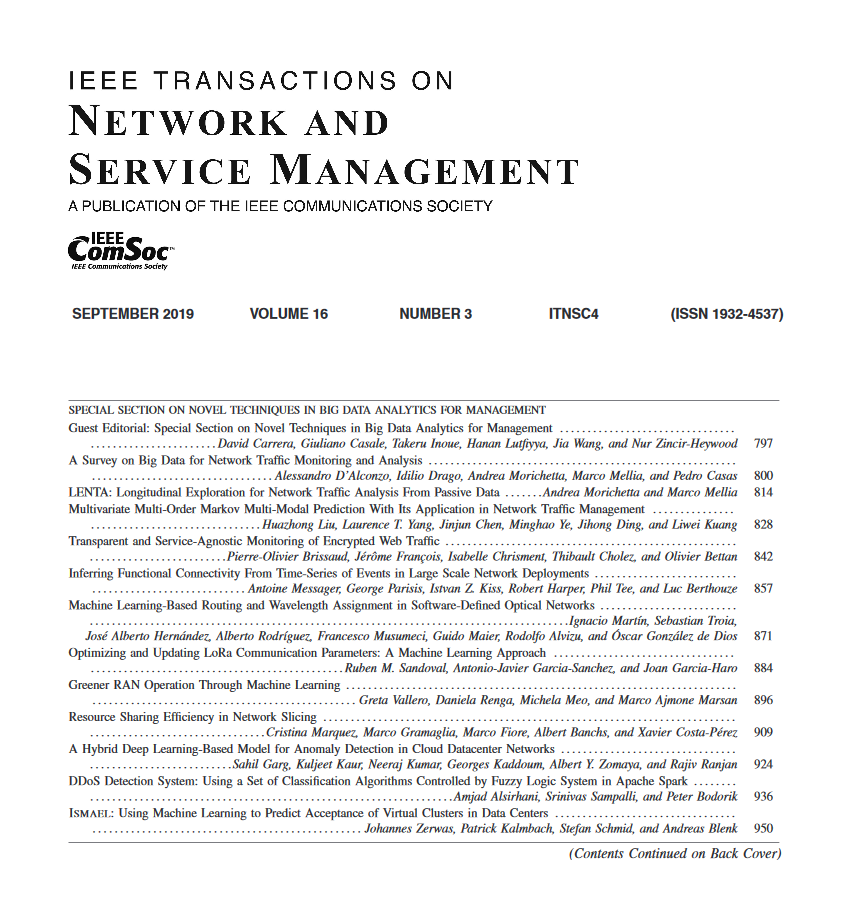Investigating the Dependability of Software-Defined IIoT-Edge Networks for Next-Generation Offshore Wind Farms
IF 4.7
2区 计算机科学
Q1 COMPUTER SCIENCE, INFORMATION SYSTEMS
IEEE Transactions on Network and Service Management
Pub Date : 2024-09-11
DOI:10.1109/TNSM.2024.3458447
引用次数: 0
Abstract
Next-generation offshore wind farms are increasingly adopting vendor-agnostic software-defined networking (SDN) to oversee their Industrial Internet of Things Edge (IIoT-Edge) networks. The SDN-enabled IIoT-Edge networks present a promising solution for high availability and consistent performance-demanding environments such as offshore wind farm critical infrastructure monitoring, operation, and maintenance. Inevitably, these networks encounter stochastic failures such as random component malfunctions, software malfunctions, CPU overconsumption, and memory leakages. These stochastic failures result in intermittent network service interruptions, disrupting the real-time exchange of critical, latency-sensitive data essential for offshore wind farm operations. Given the criticality of data transfer in offshore wind farms, this paper investigates the dependability of the SDN-enabled IIoT-Edge networks amid the highlighted stochastic failures using a two-pronged approach to: (i) observe the transient behavior using a proof-of-concept simulation testbed and (ii) quantitatively assess the steady-state behavior using a probabilistic Homogeneous Continuous Time Markov Model (HCTMM) under varying failure and repair conditions. The study finds that network throughput decreases during failures in the transient behavior analysis. After quantitatively analyzing 15 case scenarios with varying failure and repair combinations, steady-state availability ranged from 93% to 98%, nearing the industry-standard SLA of 99.999%, guaranteeing up to 3 years of uninterrupted network service.研究下一代海上风电场软件定义的 IIoT 边缘网络的可依赖性
下一代海上风电场越来越多地采用与供应商无关的软件定义网络(SDN)来监督其工业物联网边缘(IIoT-Edge)网络。支持sdn的IIoT-Edge网络为海上风电场关键基础设施监控、运营和维护等高可用性和一致的性能要求环境提供了有前途的解决方案。这些网络不可避免地会遇到随机故障,例如随机组件故障、软件故障、CPU过度消耗和内存泄漏。这些随机故障导致间歇性网络服务中断,破坏了海上风电场运行所需的关键、延迟敏感数据的实时交换。鉴于海上风电场数据传输的重要性,本文采用双管齐下的方法研究了sdn支持的iiot边缘网络在突出的随机故障中的可靠性:(i)使用概念验证模拟试验台观察瞬态行为,(ii)使用概率齐次连续时间马尔可夫模型(HCTMM)在不同故障和修复条件下定量评估稳态行为。研究发现,网络暂态行为分析中出现故障时,网络吞吐量会下降。在定量分析了15个不同故障和修复组合的案例场景后,稳态可用性范围从93%到98%,接近行业标准SLA的99.999%,保证了长达3年的不间断网络服务。
本文章由计算机程序翻译,如有差异,请以英文原文为准。
求助全文
约1分钟内获得全文
求助全文
来源期刊

IEEE Transactions on Network and Service Management
Computer Science-Computer Networks and Communications
CiteScore
9.30
自引率
15.10%
发文量
325
期刊介绍:
IEEE Transactions on Network and Service Management will publish (online only) peerreviewed archival quality papers that advance the state-of-the-art and practical applications of network and service management. Theoretical research contributions (presenting new concepts and techniques) and applied contributions (reporting on experiences and experiments with actual systems) will be encouraged. These transactions will focus on the key technical issues related to: Management Models, Architectures and Frameworks; Service Provisioning, Reliability and Quality Assurance; Management Functions; Enabling Technologies; Information and Communication Models; Policies; Applications and Case Studies; Emerging Technologies and Standards.
 求助内容:
求助内容: 应助结果提醒方式:
应助结果提醒方式:


